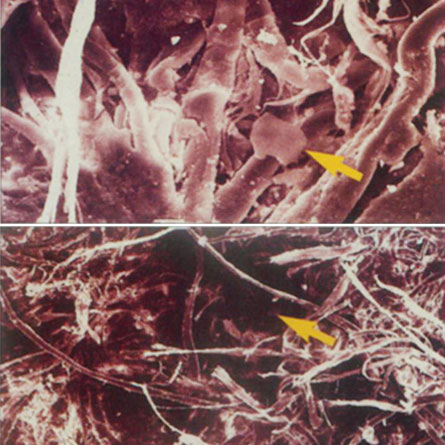Drugged money
For more than a decade, chemists have been pulling tiny grains of cocaine out of a large proportion of sampled U.S. greenbacks. My first story on the topic ran nearly a dozen years ago. The most recent update comes from the American Chemical Society “fall” national meeting, today, here in Washington, D.C. Researchers from the University of Massachusetts Dartmouth have just reported finding traces of cocaine in 95 percent of the banknotes collected from our nation’s capital. Ouch!

Bills that proved most likely to carry the drug: $5 to $50 denominations.
I spoke with chemist Yuegang Zuo, a few days ago, about his team’s findings. He noted that of the 234 banknotes sampled from 17 U.S. cities, those with the heaviest cocaine residues – as much as 1,240 micrograms per bill – tended to come from relatively big cities with serious drug problems. Cities like Baltimore, Boston, Detroit and Los Angeles.
OK, so what about New York and Chicago? They aren’t necessarily clean, Zuo acknowledges. His group simply collected no bills in either city. But in my story back from 1997, 78 percent of single-dollar bills from Miami, Chicago and Houston had detectable traces of cocaine. And, predictably, Miami’s quantities were notably higher.
In the new UMass. study, the composite average proportion of contaminated bills was: 90 percent for U.S. banknotes, 85 percent for Canada’s paper dollars and 80 percent of Brazil’s reais.
The American city with the lowest proportion of tainted bills: Salt Lake City. Relatively little cocaine-laced currency turned up in China (just 22 of 112 yuan banknotes analyzed) or in Japan (a mere two of the 16 yen banknotes sampled). Indeed, Zuo remarked, Japan’s money overall looked pristine. Like the bills had just been ironed or were all brand new.
In his group’s new analysis, some contaminated bills hosted a few nanograms of cocaine, amounts in the neighborhood of a thousandth the mass of a grain of sand. Others held roughly 100,000 times that much. But even the most tainted bills didn’t carry enough of the drug to get anyone high. (So no trying to beat a drug charge by arguing that you’re the unwitting victim of handling too much money.)
I asked Zuo if he had examined the relative structure of different nations’ currency. No. But back in the late ‘90s, chemists at Argonne National Laboratory did just such a study and their micrographs showed that cocaine didn’t adhere to the surface of banknotes. Instead, it got wedged into the nooks and crannies of a greenback’s linen fibers. Which means that once inside, they tend to stay put (until some crafty chemist like Zuo applies a solvent to release them).
Indeed, Argonne’s Jack Demirgian had explained, the linen fibers in U.S. greenbacks “look almost like hacksaw blades.” So they can presumably file cocaine crystals into pieces as the currency bends, then pocket the resulting debris. British pounds, by contrast, were made from rounder, less abrasive fibers. Those fibers were also woven too tightly to effectively cage cocaine crystals.






